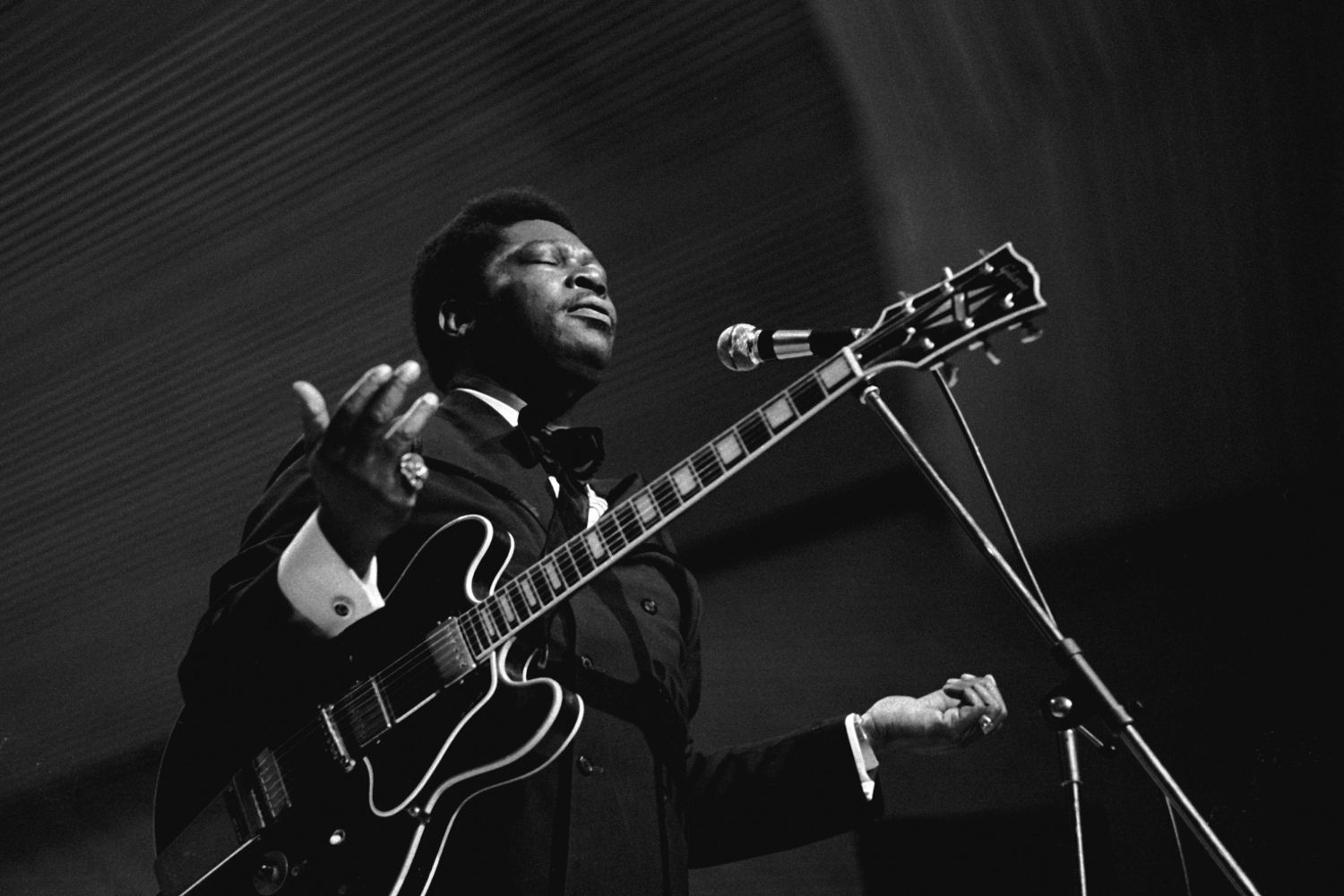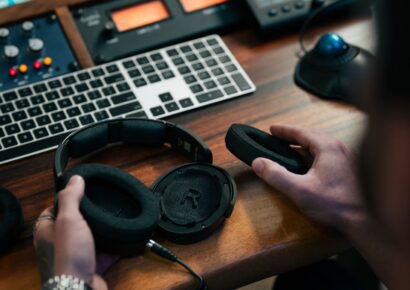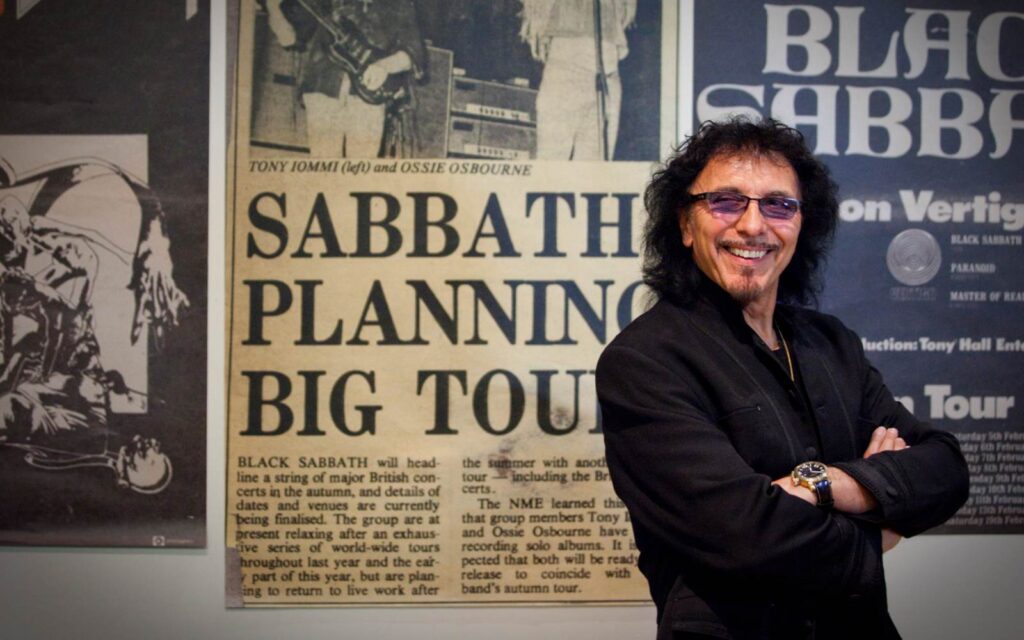Icehouse sang a song called “Stolen Guitar” on the Big Wheel album.
In 2020, Slash named his new Les Paul Standard Goldtop “Victoria” after the person whom he said took a bunch of to-be-famous guitars out of his home studio in Los Angeles in the late ‘90s.
He got most of them back, but “one of the guitars I didn’t get back was a Goldtop.”
When he got the replacement, he figured it was only correct he should name it after the accused!
Doors Calling
In January 2024, The Doors’ Robby Krieger was still calling for owners of a 1963/4 red Gibson SG Special to check if the serial number was 88779… 57 years after it disappeared from a Los Angeles rehearsal room in 1967.
Famous guitars
Bought the day after seeing Chuck Berry playing his cherry red Gibson ES-335, Krieger used it to audition for The Doors, and write their breakthrough “Light My Fire”.
Read all the latest features, columns and more here.
Fat Lady Sings
Pete Murray didn’t have to wait nearly 60 years for the return of his famous guitar. In April 2024, at the Roche Estate in NSW’s Hunter Valley as part of the Red Hot Summer Tour, his Cole Clark Fat Lady 1 acoustic was returned.
In the 18 years since the theft, it had been stored inside its case with all the accessories, and didn’t seem worse for wear.
Here are the stories behind over a dozen famous guitars which were purchased with a “five-finger discount”.
GEORGE HARRISON’S “LUCY”
The gold-plated ’57 Gibson Les Paul had quite a journey before it reached George Harrison.
It belonged to John Sebastian of US folk-rockers Lovin’ Spoonful (“Summer In The City”), and then Rick Derringer of The McCoys (“Hang On Sloopy”).
Derringer’s old man sniffed it looked “real beat up”, so Rick got it painted bright red.
But he didn’t like the colour, so he offloaded it at Dan Armstrong’s guitar store in LaGuardia Place in Greenwich Village, New York.
Bestie
It was bought by Eric Clapton who gave it to his bestie George in August 1968.
George called it “Lucy” after red-haired actress Lucille Ball of I Love Lucy TV series.
In fact Eric would play Lucy when he whipped off that white flash guitarwork on The Beatles’ “While My Guitar Gently Weeps”.
Break In
Five years on, somebody broke into George’s home in Beverly Hills and made off with Lucy.
She was tracked down to Whalin’s Sound City, a music store on Sunset Boulevard in Hollywood.
But by the time the cops got there it had already been sold – despite a statutory 30 day waiting period that was in place in the state.
Urgency
The urgency of the sale was that one of Mexico’s best known guitar players, Miguel Ochoa, had been holidaying in LA and planned to return home that day.
He had no idea that the guitar he paid $682 for was hot. On the sales receipt, he left the phone number of the place he was staying at.
When George rang, Ochoa thought it was a joke, hung up and went off to catch his flight accompanied by Lucy.
Mexican Stand-Off
Talks continued in a real life Mexican stand-off. Ochoa did not want to be paid to give up Lucy but wanted a sunburst Les Paul and a Fender Precision Bass in lieu.
George good-humouredly stated Lucy had been “kidnapped”, and he kept her until his death in 2001.
In September 2022, the 1958 Gibson Les Paul that Ochoa got a trade (serial # 8 5424) was sold at auction for $312, 500.
JEFF BECK’S ’59 LES PAUL STANDARD
Jeff Beck added the sunburst ’59 Standard to his Gibson Les Paul collection in the summer of 1968 for $300 from a Chicago dealer called Rick Nielsen (later of Cheap Trick fame).
On July 21 1969, during a US tour with the Jeff Beck Group (with unknown Rod Stewart and guitarist Ron Wood) there was a drama at the Tamarack Lounge in Ellenville, New York, when Beck sprayed the crowd with a fire extinguisher.
Riot Followed
A riot followed, and security guards rushed the band off the stage, leaving their gear behind.
In the melee, someone took off with the axe.
In 2000, New York guitar dealer-to-the-stars Perry Margouleff was approached by someone offering to sell a guitar that had belonged to Beck for $75,000.
Contacted Beck
He contacted Beck’s manager and asked if the guitar hero wanted to buy it and if not, would he have a problem if he (Margouleff) bought it.
He was told Beck had no objection and he went ahead with the acquisition.
But in January 2018, Beck changed managers, and Margouleff was told the guitar was stolen property, and that the guitarist wanted it back.
Court Case
A court case initiated by Margouleff went through the legalities of who was rightful owner.
The case wasn’t settled when Beck died in 2023, and the guitar remains with Margouleff.
JOHN & RICK BREWSTER’S COLLECTION
In the 1980s The Angels toured America a number of times, where songs like “Marseilles” were getting played on radio.
On three of those visits, they got robbed.
The first time was in 1980 in Chicago. They’d just arrived after a gig the night before in Detroit with Cheap Trick.
Padlock
The crew had been told to padlock the van and take the gear in. It didn’t quite work that way.
Guitarist John Brewster told Mixdown that the gear included his valuable 1973 Gibson Les Paul Goldtop, a Gibson SG and Rick’s very expensive Epiphone Sheraton semi-acoustic.
These axes were pumping the night attack on globally successful albums Face To Face, No Exit and Dark Room.
Local cops were not interested in doing anything until an envelope containing $1,000 was passed over.
Broadcast News
Radio stations broadcast the news of the robbery. Cheap Trick’s Rick Nielsen, who lived in Rockford, 70 miles away, threw a bunch of guitars in his station wagon, and drove over.
Brewster recollected: “We were standing there in the Park West Club with the agent, wondering what to do as the show was sold out.
“The support act had offered to lend us their gear, as well as their backline as our new PA had also gone.”
Take Pick
“Rick walked in and said ‘Take your pick, guys!’ He was wonderful.”
Nielsen stayed for the show and joined them onstage during the encore, “Can’t Shake It”.
The cops found the stolen van at the bottom of the river, empty except for the crew’s laundry.
Shoot-Out
A few years later the gang members died after a shoot-out, but not before they also hijacked some British bands as well.
In 1981, Rick’s L series Strat got stolen in New York from the dressing room after it was inadvertently left behind for a couple of minutes.
Third Time
The third time was, yes, when the truck was stolen with the gear still inside despite strict orders given to the road crew (different from 1980) that it be moved into their hotel.
Two Les Pauls disappeared this time, but as Brewster admitted, “We weren’t that bothered, we were not emotionally attached to them.”
JIMMY PAGE’S BLACK BEAUTY
Jimmy Page bought Black Beauty, a 1960 Gibson Les Paul Custom with a Bigsby B7 bridge, when he was 18 in 1962.
He’d been walking down Charing Cross Road in London and stopped in small music store Lew Davis, when something caught his eye.
“There was this guitar hanging on the wall looking so bloody sexy.”
Come On
“It was saying, ‘Come on then. Come on, stop looking and ask them if you can play me.’
“I played it unplugged for quite a while. Then when I plugged it in it was like a dream, and I knew this was it.
“It sounded extraordinary. I knew it was coming home with me.”
Distinctive
It cost £185 with a distinctive mother of pearl fret and gold hardware, and to which he added two extra toggle switches.
In those days, Page was pulling up to three sessions a day, and Black Beauty was on Donovan’s “Sunshine Superman”, Petula Clark’s “Downtown”, The Who’s debut “I Can’t Explain” and tracks by Tom Jones, The Kinks, Marianne Faithfull, Them, The Rolling Stones, Shirley Bassey, Lulu and Joe Cocker.
Airport
In 1970 it got pilfered at Minneapolis-St. Paul International Airport, apparently by a baggage handler, as Zeppelin flew to Montreal, Canada.
The thief kept it under his bed until 1992, scraping off most of the personal, identifiable features but the serial number remained.
For years Page would coast around guitar shops looking for it, and put an ad in Rolling Stone for every issue over the next 12 months.
Nothing Unearthed
Nothing was unearthed. “It was like it evaporated,” Jimmy sighed.
There were rumours that Page’s interest in the occult had seen the guitar hit with a curse.
In 1992 a man walked into Willie’s American Guitars in St. Paul and told the owner, Nate Westgor, “I have Jimmy Page’s guitar.”
Bought It
He’d bought it for $5,000 from the baggage handler’s widow, and Westgor bought it for that price.
A cursory examination by various guitar dealers found it wasn’t Black Beauty, so Westgor sold it to a staffer, who were in a punk band, for $5500.
In 2014, the employee brought it back to the store for repairs after he broke the headstock while doing a rock star move.
Black Light
Westgor put it under black light and took a good look … and realised it was Black Beauty after all.
The employee decided, despite the money he could have made selling it (Westgor estimated its price at $10 million), that it needed to be given back to the rightful owner.
Initially, confirming it was Black Beauty proved difficult as photos from that time were blurry.
Video Archive
But according to Guitar World, that was solved when Page went through video archives in his home in London and found a 60-second clip of Led Zep at the Royal Albert Hall.
A brief shot saw the distinctive inlays on the fret.
Page rewarded the honest young musician by giving him a 1959 Les Paul Custom worth $45,000 from his collection.
To Believe
“I found it hard to believe that I was going to get the guitar back after all those years.”
Page never let it be known Black Beauty was back in 2015.
But sharp eyed fans noted it was one of the seven of his guitars that were exhibited in New York’s Metropolitan Museum of Art in 2019.
MARTY WILLSON-PIPER’S RICKENBACKER
The Church’s original guitarist Marty Willson-Piper had a collection of Rickenbackers.
But his dream 1965 model (initially thought to be a 1964) 1993 Rose Morris 12 string disappeared in the 1980s from the New York offices of his management company.
Exported
These were exported to Europe and Australia from the US and quite rare because they had a f-hole instead of the cat eye sound hole.
The guitar is seen played by Willson-Piper in the video for The Church’s “A Different Man” and featured on the cover of his Rhyme album.
BILLY CORGAN’S GISH STRAT
On June 12, 1992, Smashing Pumpkins played St. Andrews Hall in Detroit.
Their usual road crew, who knew about production and security, weren’t available, so a friend of Corgan’s stepped in.
After the show he had the unhappy task of informing Corgan that someone had walked out with his ’70s Fender Stratocaster through the back door.
Attached
Corgan was attached to the axe, known as the Gish Strat, which he bought in 1989/80 for $275 from Pumpkins drummer Will Chamberlin.
The “flat pole” pickups were stamped with the date, Dec. 30, 1975 but its serial number indicated it was considered a ’76.
He told Rolling Stone: “The minute I started playing on the Strat, it was like it came to life.
Amplified
“It was like everything I was doing suddenly was amplified.
“On that Strat, it was like you suddenly could hear every little thing I was doing …
“Suddenly the sound of the band got way more beautiful, psychedelic and wide.”
Psychedelic
Not liking its yellow colour because it clashed with the band’s early Goth image, Corgan painted it psychedelic.
It had an American hard rock maple neck that he described as “like that of a violin”.
The middle pickup was lowered really flat to the pick guard to accommodate his intense right hand technique so it stayed out of the way of his picking hand.
Aggressive Tone
It had an aggressive tone, and shaped the band’s move to a heavier but dreamier psychedelic sound that was on full display on their debut album Gish.
Corgan offered a $10,000 reward, upping it to $20,000 in 2010.
Call
24 years after its disappearance, he got a call for a music industry exec on behalf of a Beth James, a mother of three from Flushing, Michigan, about 80 minutes northwest of Detroit.
Somewhere between 2009 and 2011, she bought it at a garage sale for $200.
She like the floral colours, and got it to be “a cool conversation piece” in her basement when she and her husband threw dinners and orgies.
Meeting
A meeting was held at the Sunset Marquee for Corgan to check out the axe.
The buzz-cancelling back panel was missing. But by looking at the KM initials carved by the previous owner and cigarette burns on the headstock, he knew it was the Gish.
Corgan had two wins out of the theft. Beth refused the $20,000 reward.
After it was stolen, the guitarist was forced to buy new axes, which in turn created the different sounds of Siamese Dreams and Melancholy which increased the Pumpkins’ global popularity.
ZAKK WYLDE’S BULLSEYE LES PAUL
While Ozzy Osbourne/Black Label Society shredder Zakk Wylde was inside the Chicago Theatre playing as part of The Experience Hendrix tribute show on March 14, 2014, a thief hanging around the tour bus struck lucky.
The bus was unlocked, and inside was Wylde’s $10,000 custom built Pelham Blue Bullseye LP Gibson and leather BLS vest.
Ten days later, a man turned up at Royal Pawn Shop at 428 S. Clark St, and sold it, giving a telephone and address.
Alert
There had been an alert about it, but the two owners had forgotten about it, and an employee bought it for $50.
The store owners decided to check it out, found it was worth more than five crispy ones, and called the police.
DON MARTIN’S PRECISION JAZZ BASS
After NZ-formed Sydney-based Mi-Sex played two great nights at the Palais Theatre in Melbourne in May 2015, bassist Don Martin had a shock to find his Precision Jazz bass had disappeared from the dressing rooms.
The night had included Ross Wilson, Pseudo Echo, John Paul Young, 1927, Allniters, Rose Tattoo, GANGajang, Wendy Matthews and Swanee as part of the Pure Gold series, so it had been crowded backstage.
Red And Orange
The 1972 red and orange Fender had been Martin’s favourite, never leaving his side in 40 years.
He used on Mi-Sex’s global hits as “Computer Games”, “People” and “Space Race”.
At the time Martin was mystified how the thief could get away with it.
Few In World
“There’s very few of them in the world and it’s amazing how attached you can get to something … the weight and balance of it was something that just made it so special to play,” he said at the time.
Don Martin died from prostate cancer on August 10, 2020.
B.B. KING’S LUCILLE
The pioneering bluesman B.B. King’s Lucille was one of the best known guitars.
There were actually three of them, all named Lucille, usually black Gibsons similar to the ES-330 or ES-355.
In 1949, King was playing a set at a club in Twist, Arkansas.
Brawl
A brawl ensued, during which the huge oil-filled barrel heating the joint toppled over, and the club went up in flames.
Everyone scrammed including King… until he realised he’d left his Gibson behind.
He rushed back in, fighting the flames, to rescue the axe.
Bartender
Next day he heard that the fight was over one of the bartenders, Lucille, and decided she was worthy of being commemorated this way.
King wrote two songs about her, Little Lucille came in 1999, and then 80th Birthday Lucille which Gibson made in 2005 to mark his 80th birthday and based on the ES-355TD-SV.
It would be B.B.’s main instrument until mid-2009 when it disappeared.
Traced
It was traced to a Las Vegas pawnshop a few months later.
It had been bought by a musician called Eric Dahl, who gave it back to King as soon as he realised.
He refused compensation, and wrote a book about King’s guitars.
After King died in 2015, his estate sold it for $280,000 three years later.
JOE SATRIANI’S PEARLY CHROME
Pearly was one of three prototype Ibanez made in 1990 for Joe Satriani based on the JS2.
Ibanez tried something it hadn’t before, using a basswood body with a chrome finish.
Alas, it kept cracking and it didn’t go into mass production.
Real Chrome
“Unfortunately, they used real chrome, and any fissures created when the finish lifted the sealant off the body would crack and create a knife edge,” he told Vintage Guitar.
Pearly was named for its pair of Seymour Duncan Pearly Gates pickups, while the other two were Chrome Boy (a favourite) and Refractor.
Load-Out
Unfortunately, during a load-out in Clearwater, Florida, on August 21, 2000, it disappeared for all time, despite Satriani offering a $500 reward.
Satriani would later lose two more, Blue Donnie and Rainforest, this time from a rehearsal facility in San Rafael, California.
Keep reading about ‘Lucille’ here.







